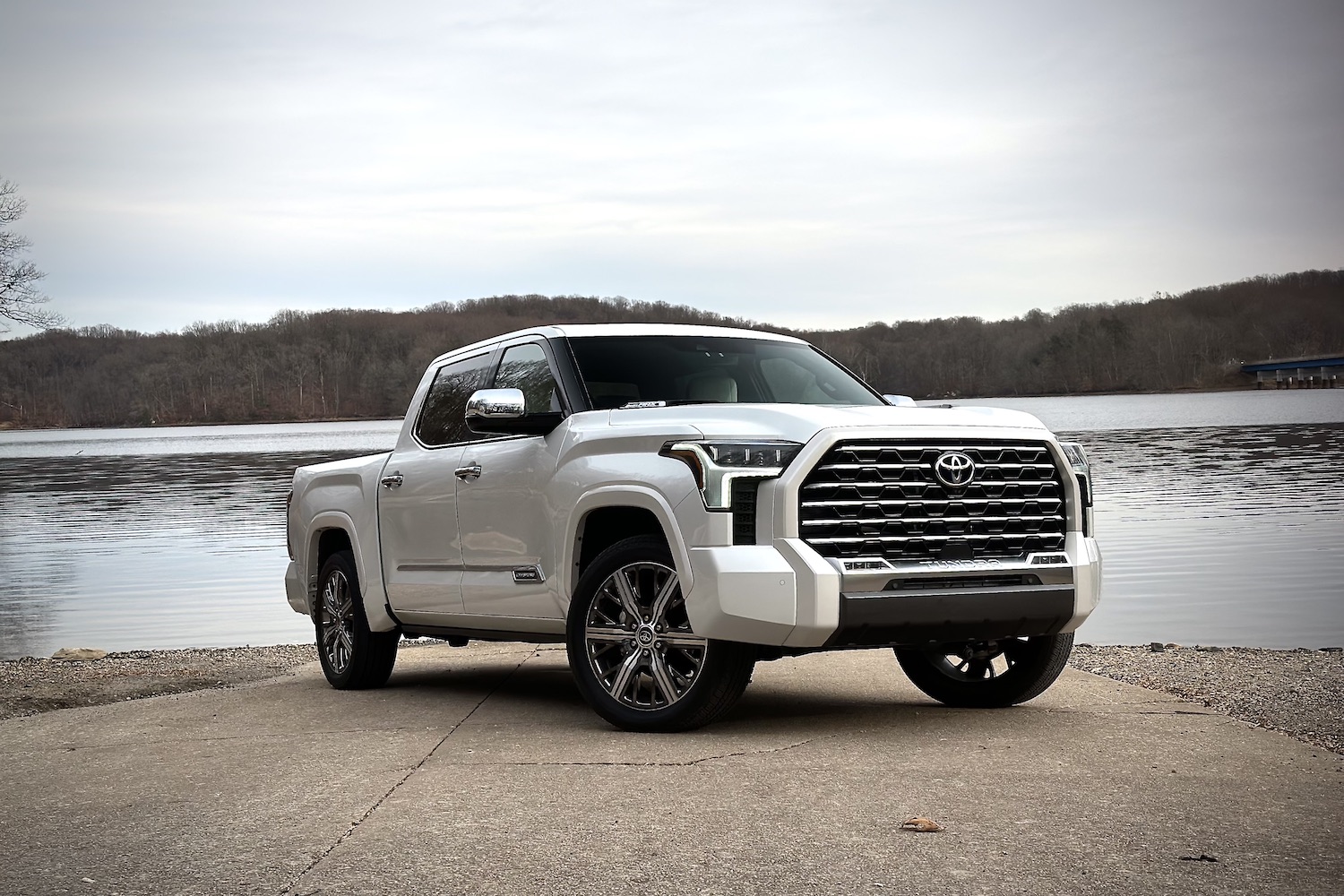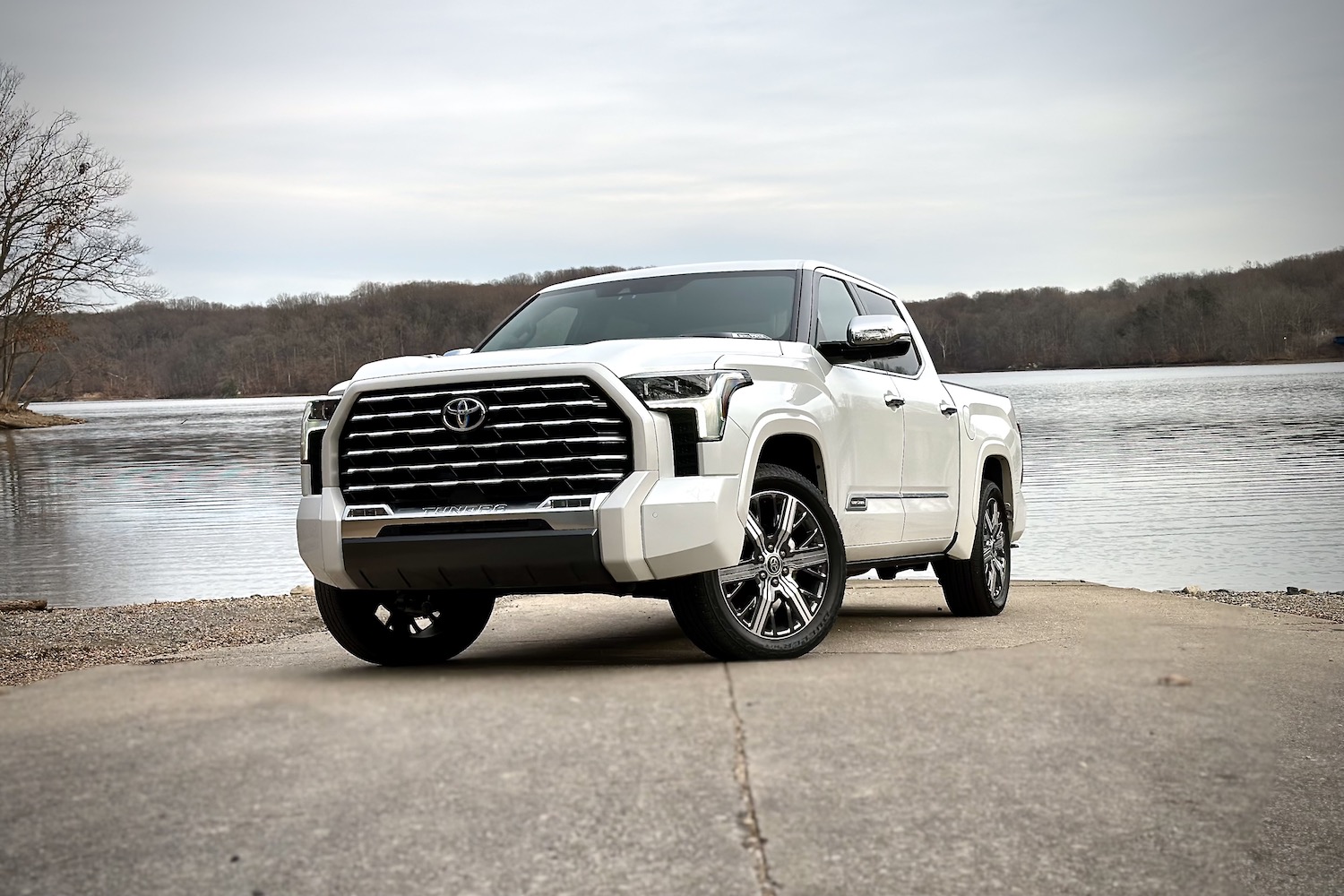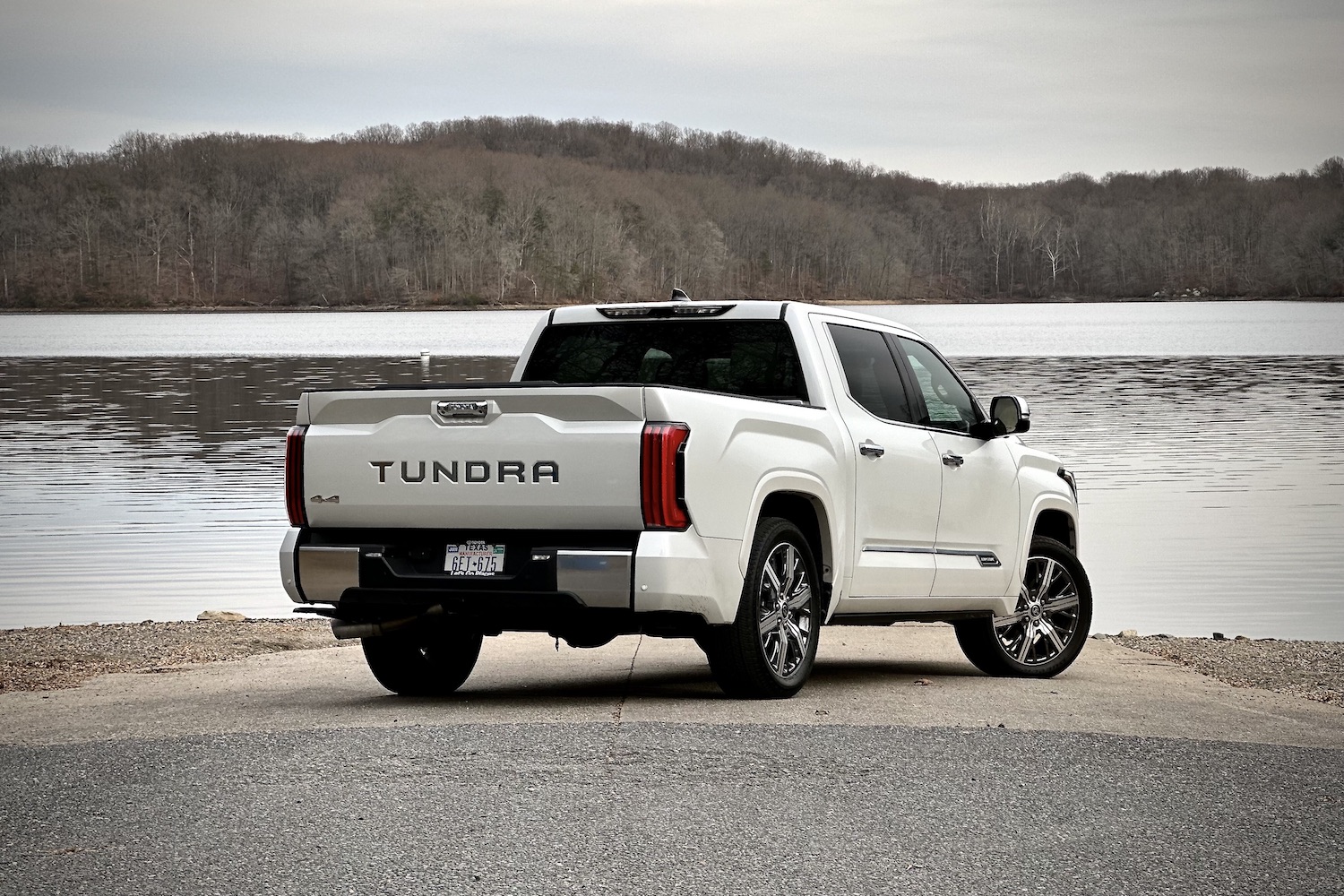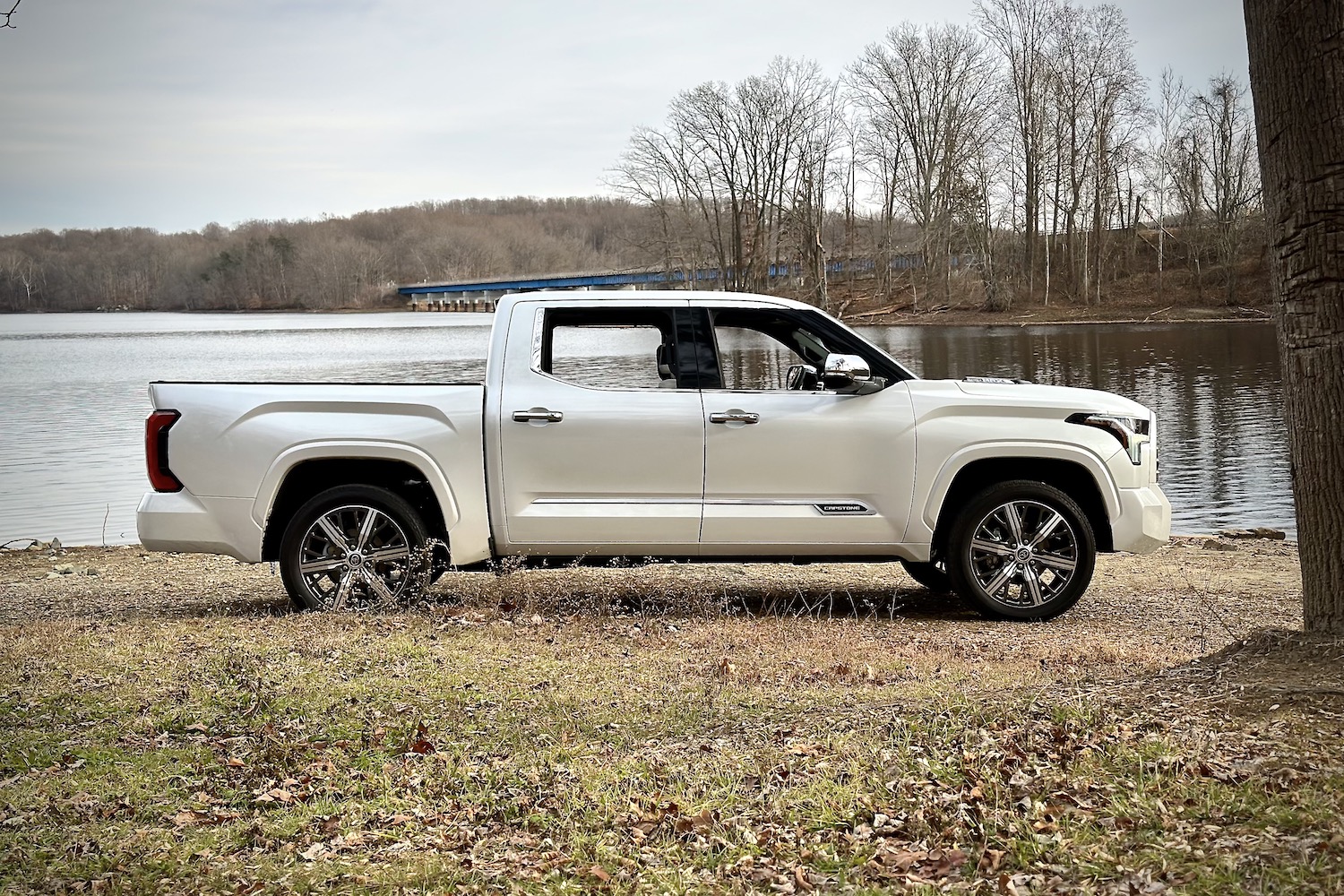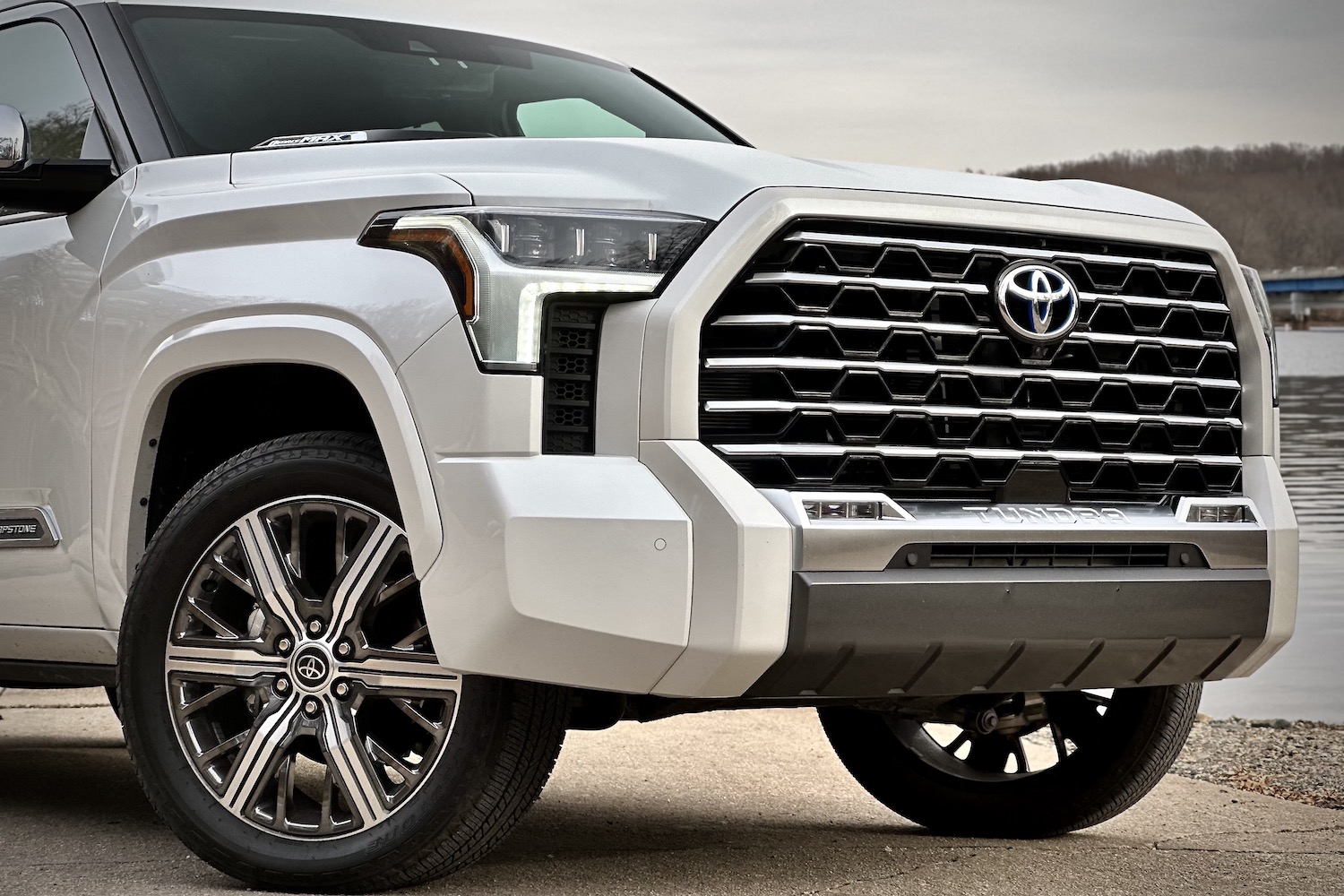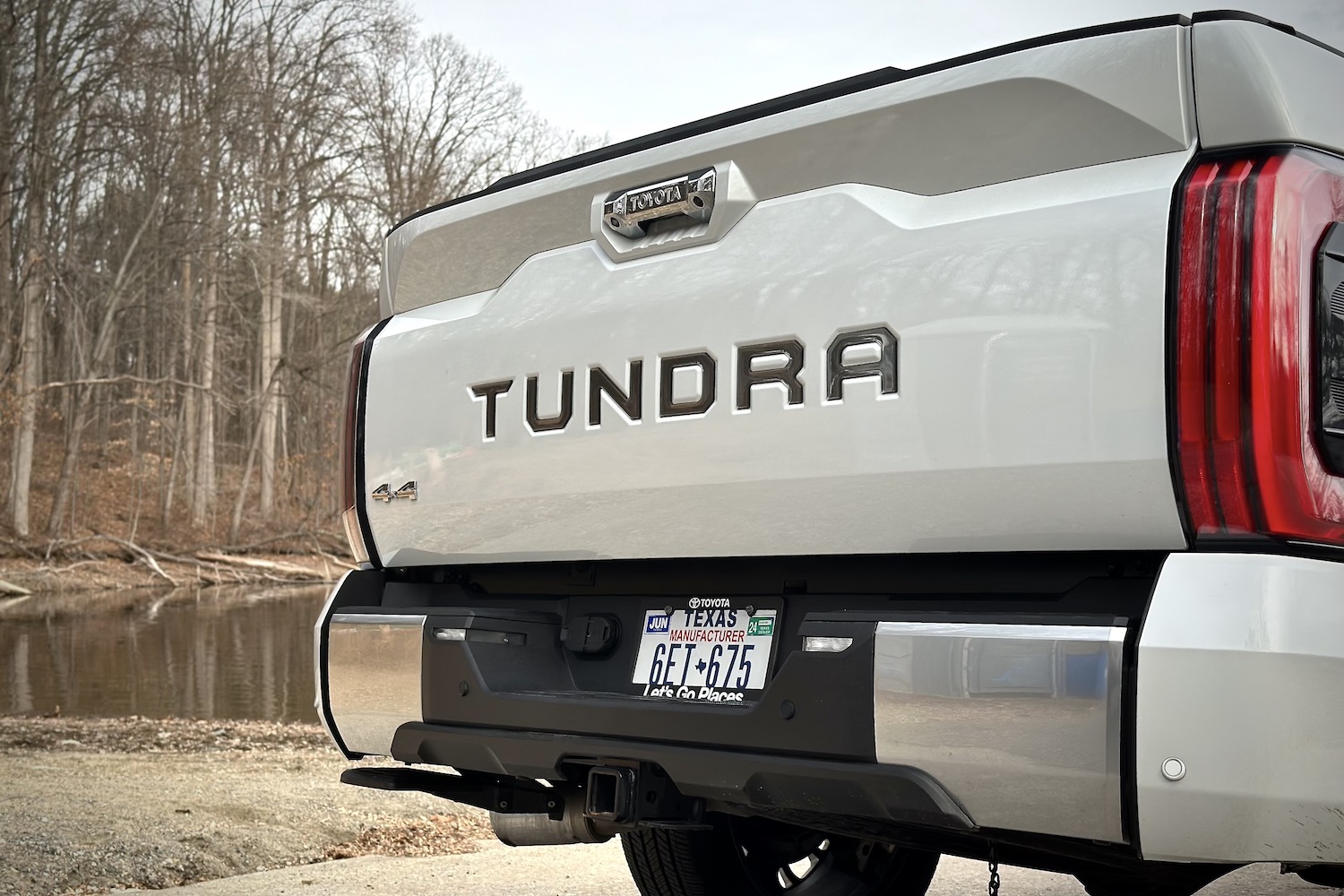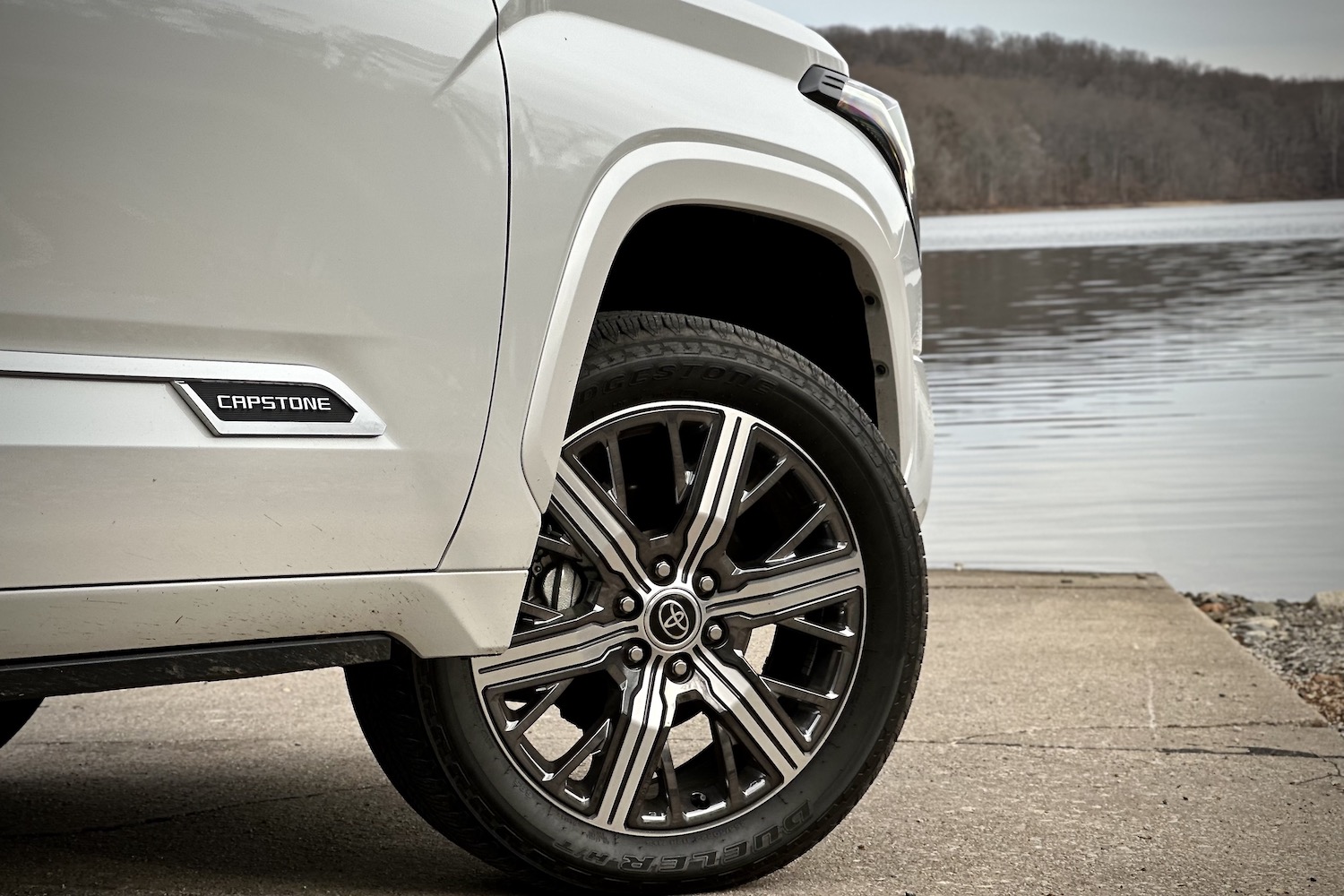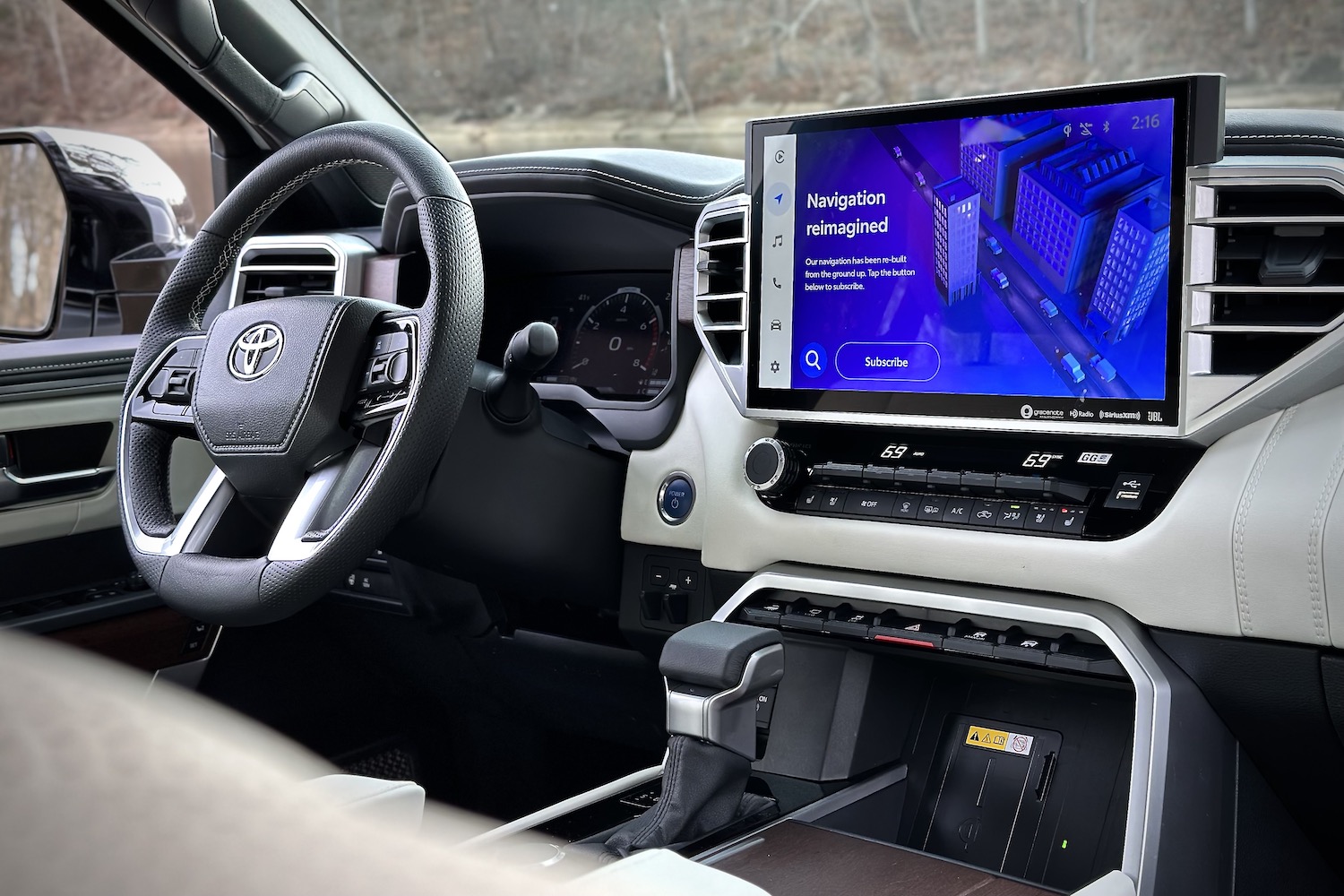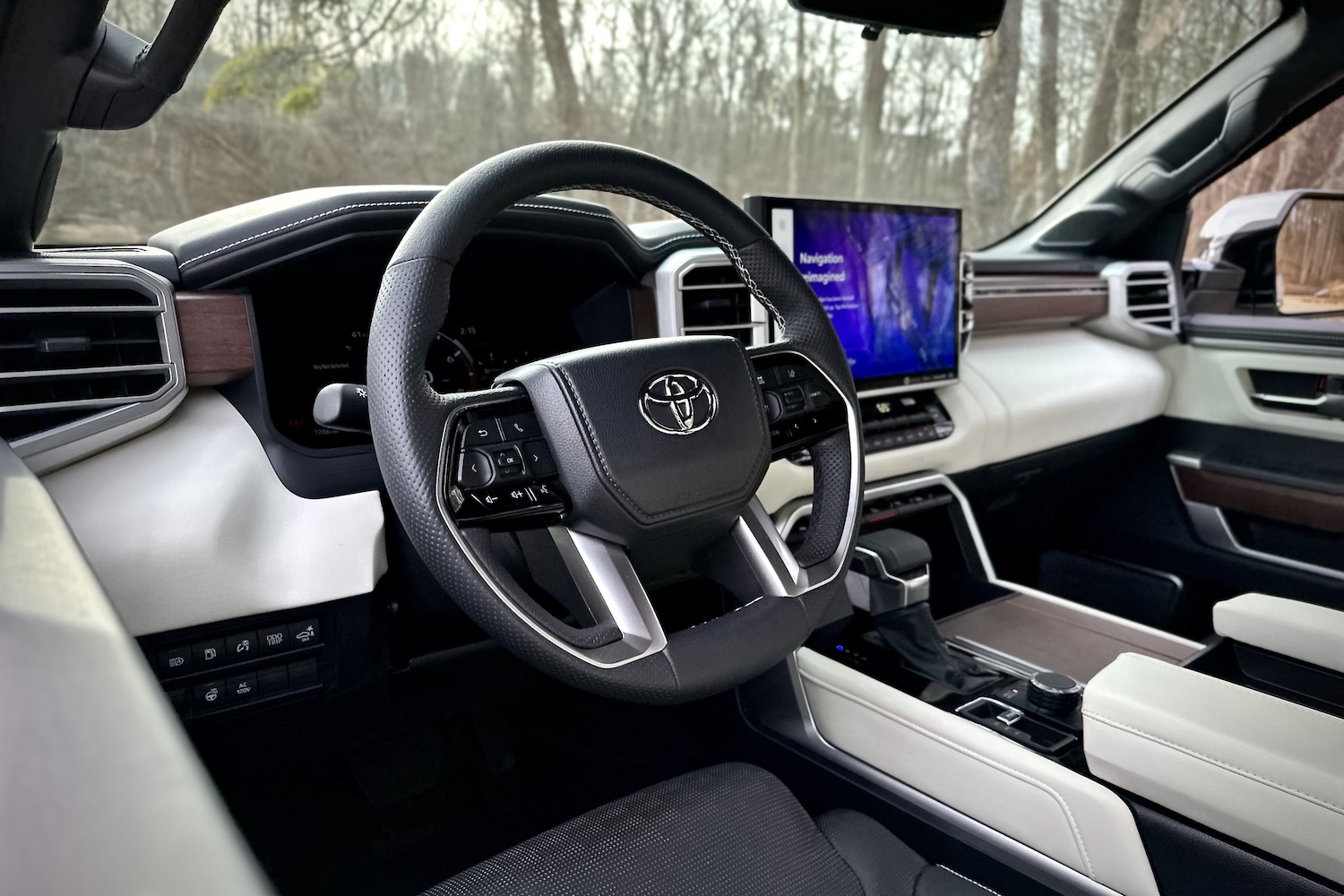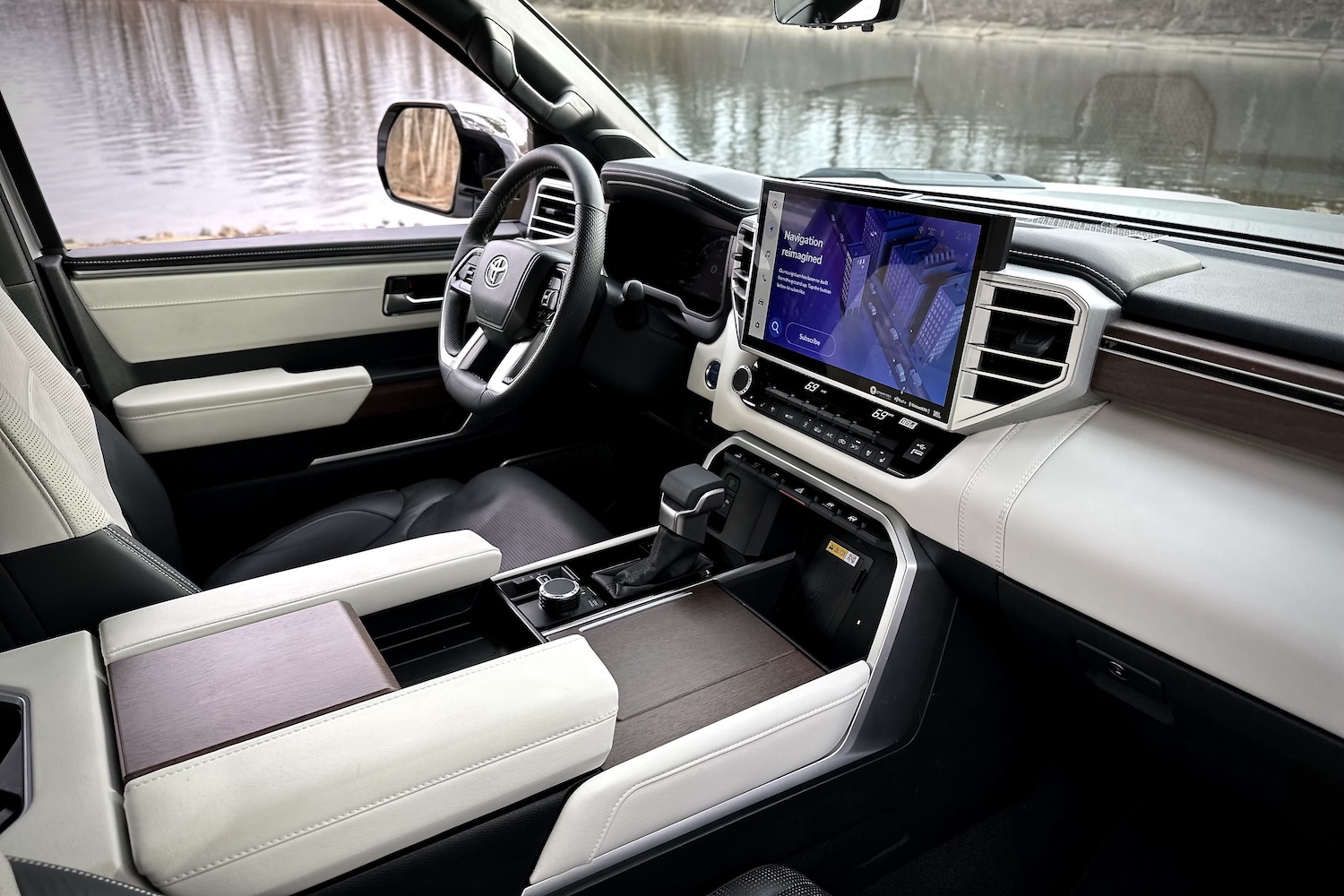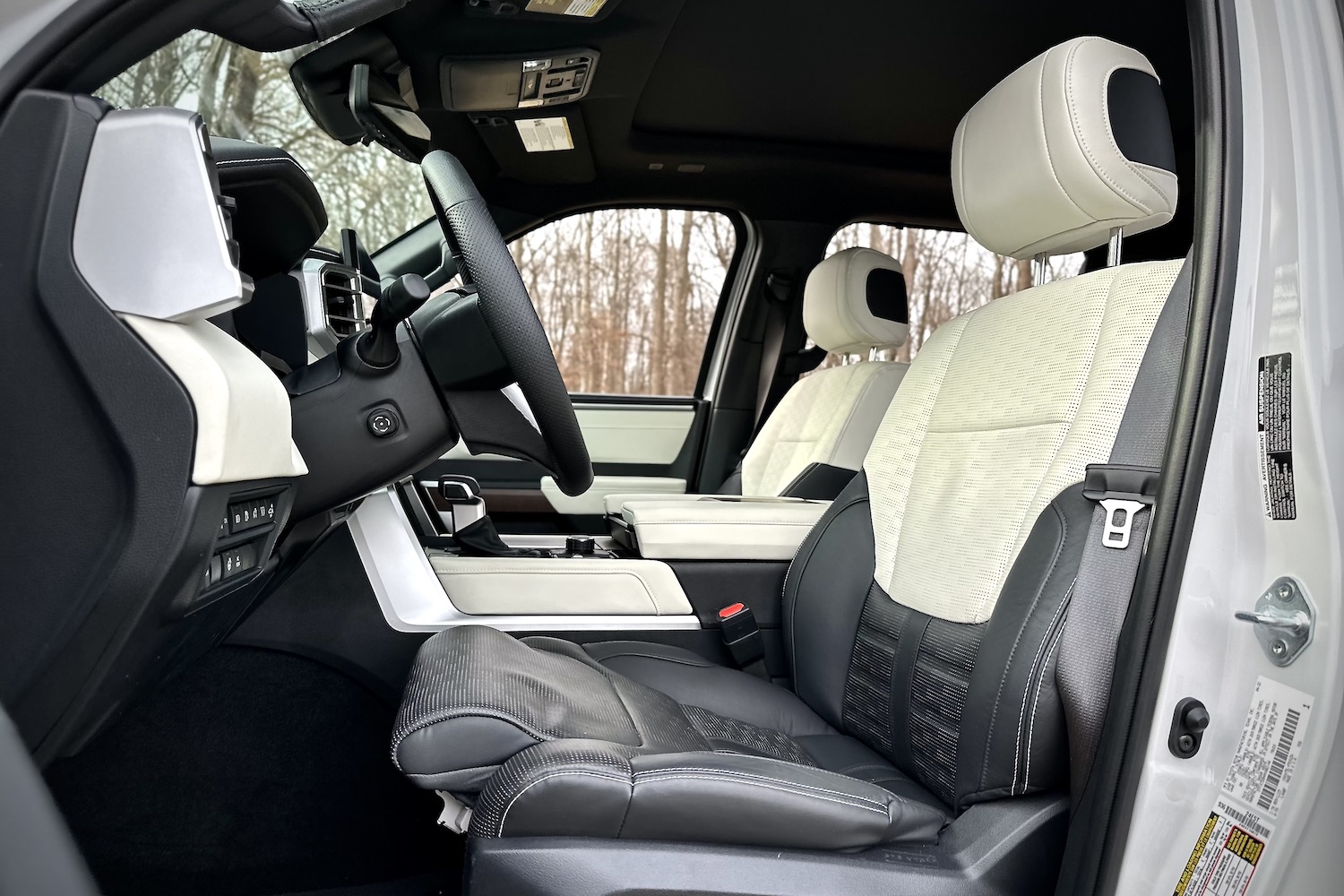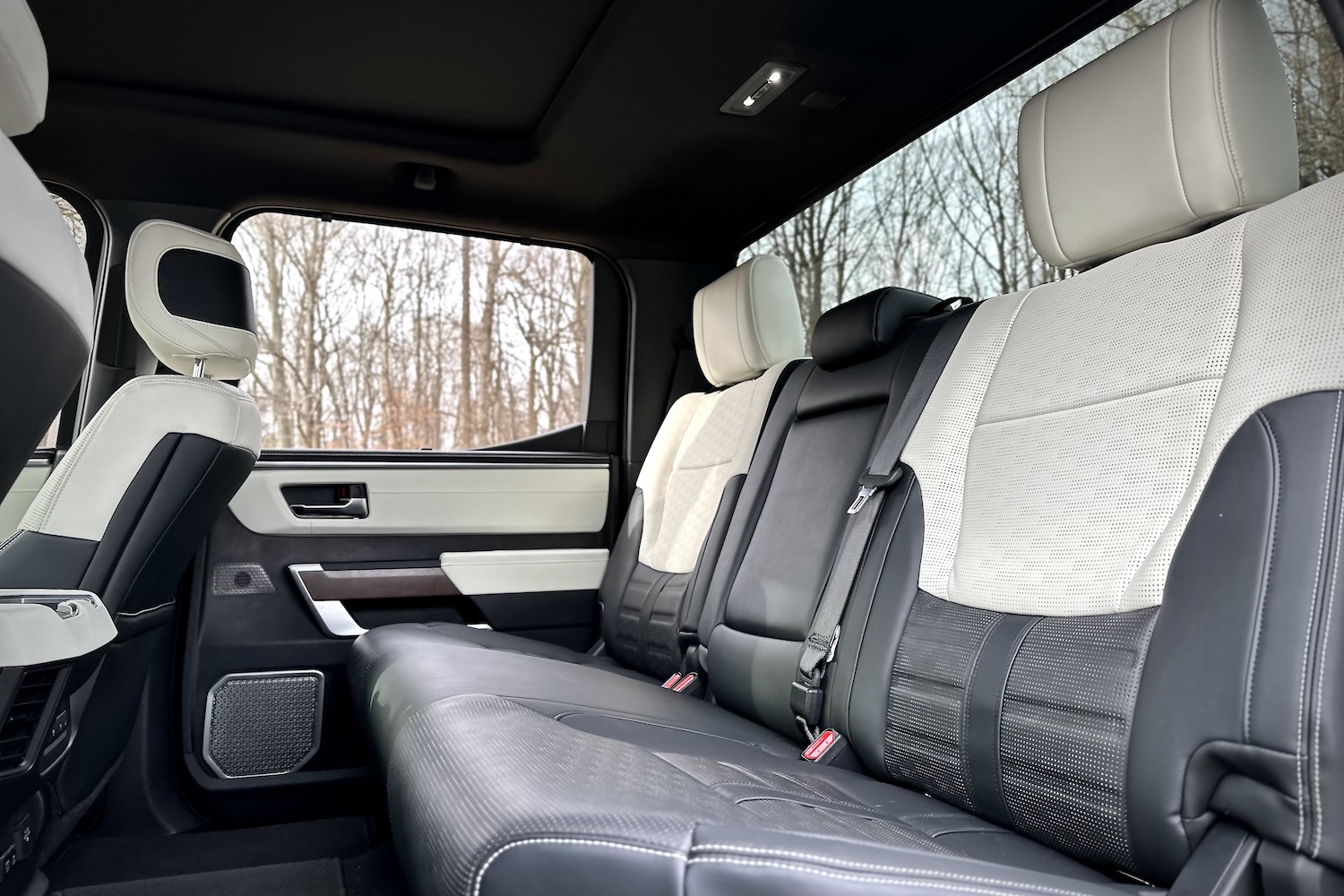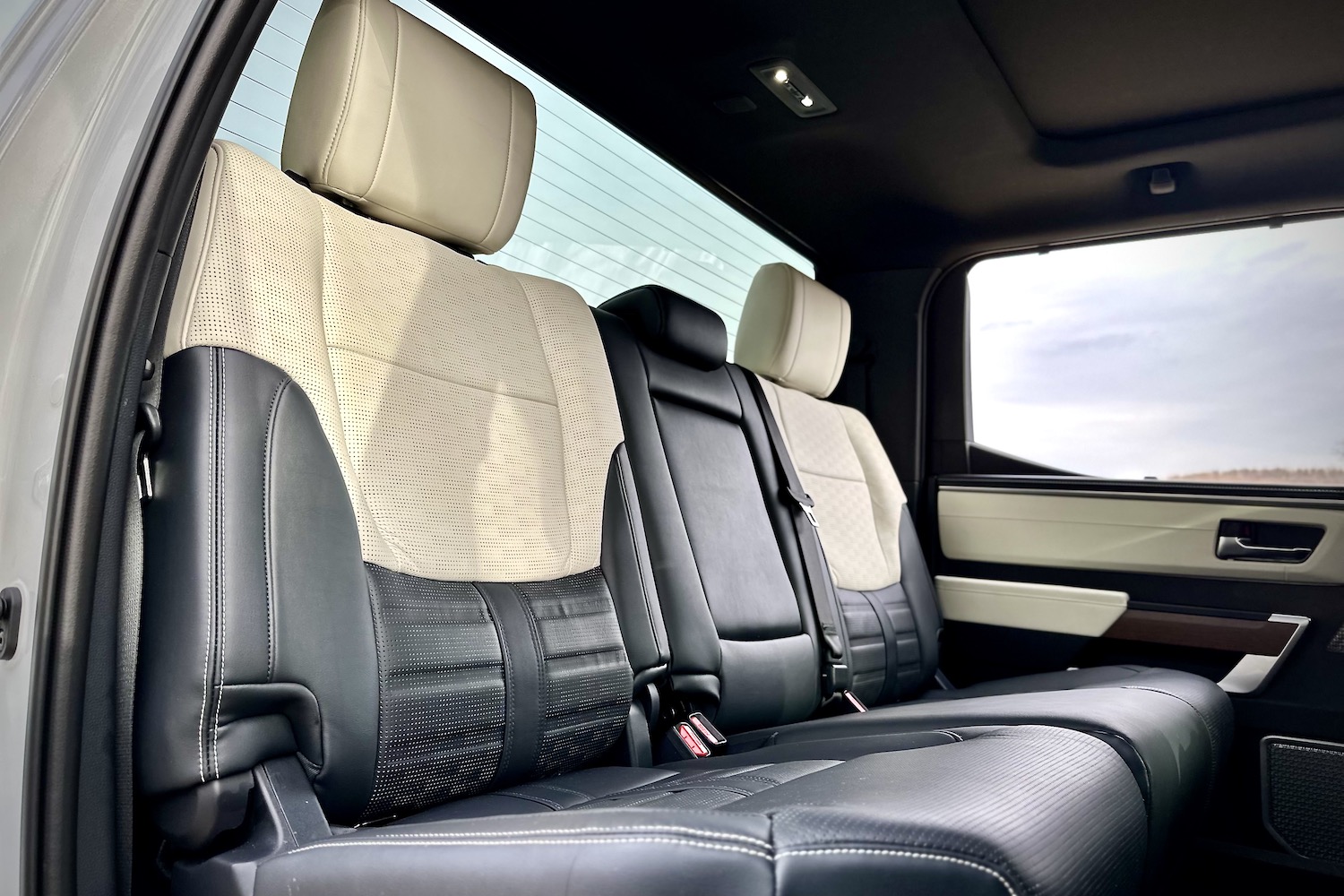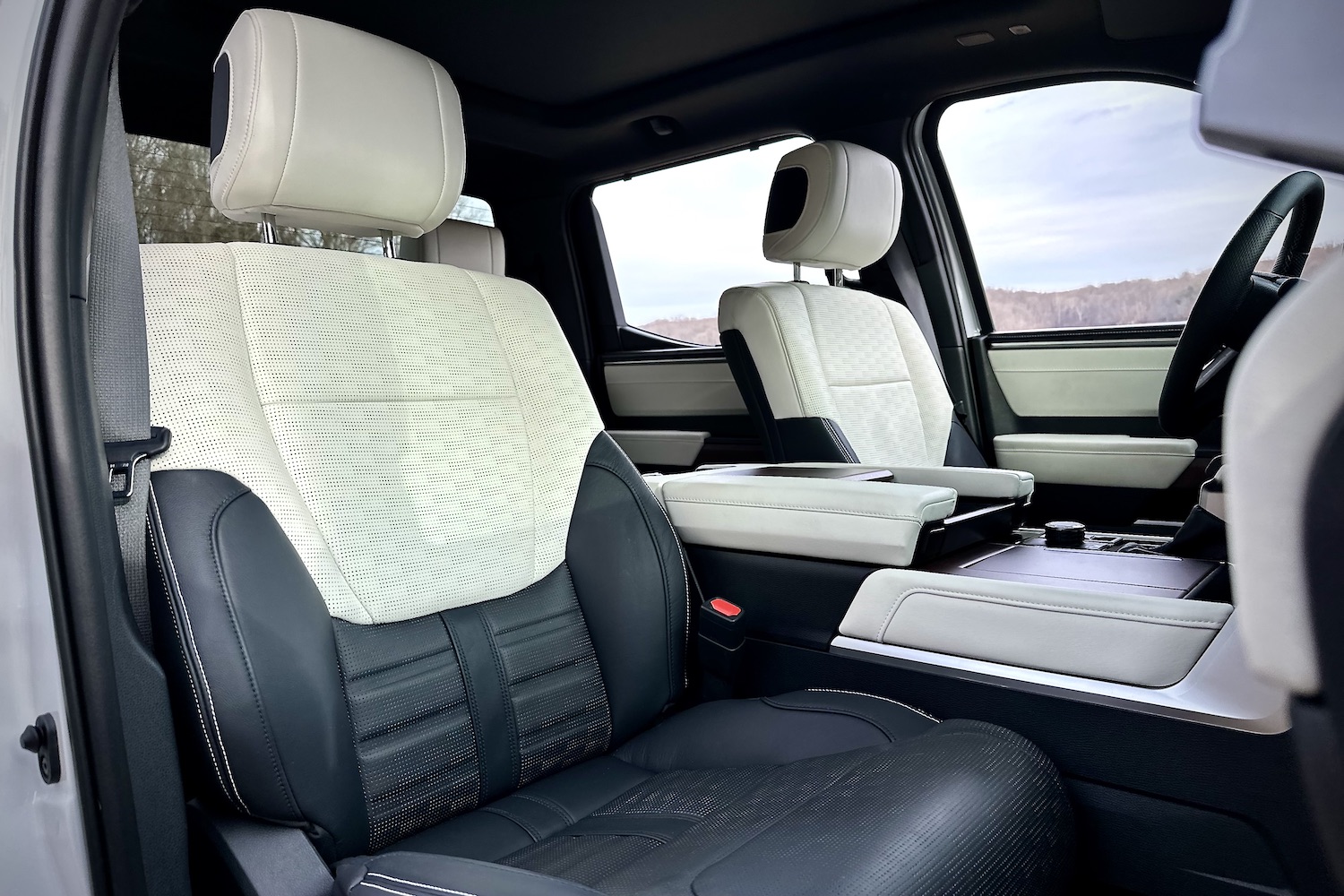There’s no hiding that the Toyota Tundra has always been well behind its domestic rivals. In a war where automakers gain ground with incredibly powerful off-road models and high towing capacity, the Tundra has always banked on other things like reliability, a standard V8 engine, and high resale value. With Ram and Ford introducing electrified powertrains for the 1500 and F-150, respectively, and with pickup trucks now mirroring large luxury sedans and being fitted with massive screens, Toyota knew it had to make some major changes if it wanted to keep up with the pack.
In its quest to compete in the arms war, Toyota looked into what it does best and ended up with the Tundra Hybrid. While hybrids are everywhere today, that wasn’t the case two decades ago. Toyota was one of the first on the hybrid scene with the 1997 Prius, so it knows what it’s doing with hybrids. The Toyota Tundra Hybrid, then, is right in the auto giant’s wheelhouse.
There’s a lot to like about the 2023 Toyota Tundra Hybrid and a few things that may give you reason to pause. Get the full rundown on the electrified pickup truck in our thorough Toyota Tundra review.
What we love about the Tundra Hybrid
Seriously powerful
The Tundra lineup is only available with a V6 engine. The base version of the pickup comes with a twin-turbocharged 3.5-liter V6 that produces 389 horsepower and 479 pound-feet of torque. These are respectable figures for the class and some of the highest figures for an entry-level powertrain.
The available Tundra Hybrid steps things up immensely by adding an electric motor into the mix. The iForce Max powertrain, which is Toyota’s name for the hybrid, raises the bar to 437 horsepower and 583 pound-feet of torque.
With the hybrid engine, the Tundra Hybrid feels peppy — and it sounds great too, though the sound being pumped into the cabin is fake. More importantly, the hybrid powertrain doesn’t make you miss having a V8 engine under the hood.
Oh my, what a big touchscreen you have
Toyota saw the 12-inch units on other trucks and, for some reason, thought that they weren’t large enough. So the Tundra Hybrid comes with a 14-inch touchscreen that’s the largest screen in the segment. It’s not vertically oriented, either, but mounted like a normal screen — or as normal as a screen can get for being 14 inches in size.
The graphics are great, there’s a helpful virtual assistant that answers to “Hey, Toyota,” and the menus are fairly easy to use. It’s a massive improvement over the last-gen Tundra and incorporates usable and stylish physical controls.
So much space
The available CrewMax (crew cab) body style is downright spacious. The Tundra Hybrid in the CrewMax configuration offers 38.5 inches of rear headroom, 41.6 inches of rear legroom, 60.5 inches of rear hip room, and 62.4 inches of shoulder room. These figures match some midsize SUVs and result in a truck that has more than enough space for the entire family.
Thoroughly luxurious
The Tundra Hybrid seriously improves in the luxury realm compared to the last-gen Tundra, especially with one of the most high-end trims.
Toyota lent us the range-topping Capstone to drive for a week, and it does a great impression of a luxury vehicle. The Capstone comes with features like 22-inch wheels, power-deployable running boards, and sound-reducing front windows. You’re also getting heated and ventilated front and rear seats, a panoramic sunroof that’s as large as a Ford Fiesta, wood trim, plush leather upholstery, and a wireless charging pad.
It goes beyond the features, as the Capstone looks and feels luxurious.

That face
You might not like the Tundra Hybrid’s massive grille that accounts for 95% of the pickup truck’s front end, but you have to admit it looks cool. It’s like 375-pound lineman Aaron Gibson charging full speed toward you, and you can’t look away. It’s bold, distinct, and different, and you have to give Toyota credit for doing something that stands out.
What we hate about the Tundra Hybrid
Towing still falls behind
The Tundra Hybrid may be more powerful than the regular Tundra, but it loses some towing capacity. This is normal for electric vehicles, but the Tundra is already down on towing capacity to rivals, so you’re losing a lot of towing capacity compared to rivals.
Towing capacity maxes out at 11,450 pounds for the Tundra Hybrid, which is noticeably less than the F-150 Hybrid that’s rated at 12,700 pounds. When properly equipped, the regular F-150 can tow up to 14,000 pounds, while the regular Tundra is rated at up to 12,000 pounds.
Not exactly fuel efficient
Normally, when you hear the word “hybrid,” you associate it with improved fuel economy. The Tundra Hybrid is more fuel efficient than the regular Tundra, but not by a wide margin.
The regular Tundra has an official fuel economy rating of up to 20 mpg combined from the EPA. The Tundra Hybrid is rated at up to 22 mpg combined. Two extra mpg isn’t a lot, and it’s lower than the F-150 Hybrid that’s rated at up to 25 mpg combined. Heck, diesel burners from Chevrolet and Ram are more efficient.
A pricey upgrade
With a starting price tag of $39,660 (with destination), the Tundra stands out as a value-packed option in the segment when you consider all of the features that the truck comes with. Meanwhile, the most affordable Tundra Hybrid costs $56,710. That’s an enormous leap in pricing.
